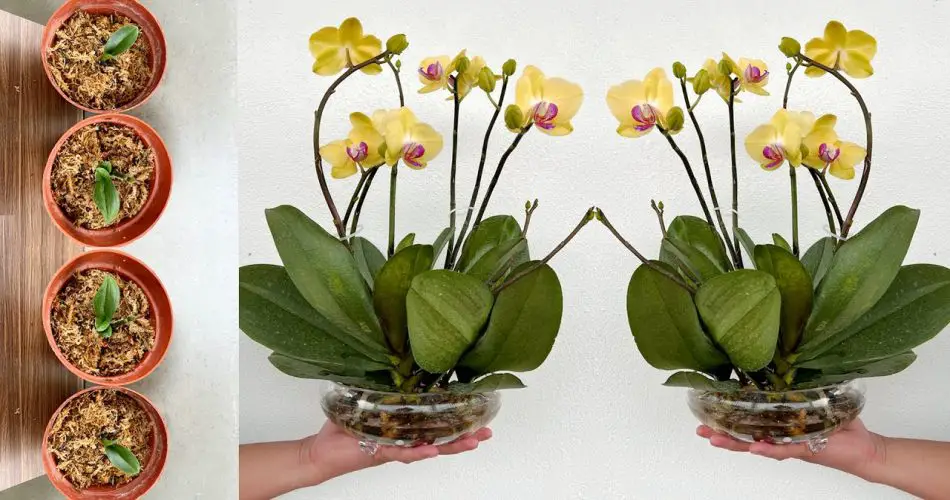Orchids, revered for their timeless allure, hold a special place among floral enthusiasts. While the annual spectacle of their blossoms brings joy, the real magic lies in unraveling the mysteries of propagation. Explore diverse methods that, when executed with precision, bestow upon you the power to perpetually cultivate these botanical wonders.
Orchid Offspring via Keiki:
A keiki, a diminutive orchid flourishing on its parent’s stem, serves as a splendid avenue for propagation. This method, rooted in asexual reproduction, ensures the new plant mirrors its maternal source with remarkable precision.
Harvesting a Keiki from an Orchid:
- As the orchid concludes its blooming cycle, meticulously sever the floral stem just above the plant’s collar.
- Gently expose the “knot” area by delicately peeling it, creating exposure to the air and coaxing the birth of a keiki.
Cultivating a Keiki:
- Once the keiki’s roots extend to a length of 4-5 centimeters, it is primed for transplantation.
- Replant the keiki in the same pot as the mother plant, ensuring both share identical growing conditions and humidity.
- Trim the keiki approximately 3-5 centimeters from the flower stem, planting it in the same pot with roots pointing downwards and lightly shrouded in soil.
- Embed the piece of the flower stem into the soil, serving as an anchor.
- With meticulous care, gently separate the matured keiki from the mother plant.
Orchid Expansion via Cuttings:
This method entails cutting the stem and nurturing the cuttings to foster new orchids.
Procedural Unveiling:
- Employ a waterproof tray, approximately 8 centimeters deep, laden with moistened sand or Sphagnum moss.
- Utilize a sharp knife to sever a 30-centimeter stem from the mother plant, dividing it into several 3-inch sections, each harboring a dormant bud.
- Position the cuttings in the tray, shroud them with plastic, and store them in an environment at 15°C, devoid of direct sunlight.
- After several weeks, elevate the temperature to 24-30 degrees, ensuring consistent moistening of the tray without excess.
- Once shoots and roots manifest, delicately cut the propagating shoot.
- Secure small pots and plant the newfound orchids in a blend of bark, volcanic soil, and moistened Sphagnum moss.
- Position the orchids in the pots with shoots pointing upwards.
- Station the propagated orchids in a well-lit area, sidestepping direct sunlight.
- Administer regular but restrained watering to prevent overhydration and potential plant rot.
- Uphold a humid ambiance, distancing the plant from direct heat sources.
Embark on the journey of orchid propagation mastery, assuring an eternal exhibition of these exquisite blooms without frequent acquisitions. Immerse yourself in the art of reproduction, witnessing the flourishing expansion of your orchid collection.



